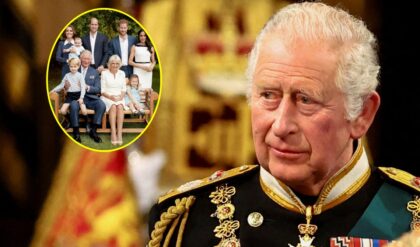The Veiled Vestal Virgin, a masterpiece sculpted by Raffaelle Monti, holds a storied journey from its creation in Milan to its current residence at Chatsworth House, steeped in both artistic brilliance and historical intrigue.
Commissioned by the 6th Duke of Devonshire during his visit to Milan on 12th October 1846, the sculpture’s genesis is marked by a swift decision, with the Duke ordering it merely six days later and securing its creation with a £60 deposit. Crafted from marble, the Veiled Vestal Virgin was completed by April 1847, showcasing Monti’s mastery in capturing the delicate form and ethereal beauty of the subject.

Originally displayed at Chiswick House in west London, the sculpture eventually found its way to Chatsworth House in 1999. Here, amidst the grandeur of the Sculpture Gallery, it has enthralled visitors and gained additional renown through its appearance in the 2005 adaptation of ‘Pride and Prejudice’, starring Keira Knightley and Matthew Macfadyen. This cinematic exposure further solidified the sculpture’s cultural significance, bringing it to the attention of a wider audience and cementing its place in popular imagination.
The Veiled Vestal Virgin itself embodies a narrative of artistic innovation and cultural revival. Monti’s technique, particularly his skill in rendering the translucency and fluidity of the veil draped over the figure, underscores the Romantic ideals of beauty and mystery prevalent in 19th-century Europe. The sculpture’s thematic resonance with the Vestal Virgins of ancient Rome, who symbolized purity and devotion, adds layers of historical depth and symbolism to its portrayal
Chatsworth House, renowned for its extensive art collection and historical significance, provides an ideal setting for the Veiled Vestal Virgin. Surrounded by other masterpieces and set against the backdrop of the estate’s majestic grounds, the sculpture continues to captivate visitors with its timeless elegance and emotional resonance.
As a testament to the enduring allure of classical themes and artistic craftsmanship, the Veiled Vestal Virgin transcends its origins as a commissioned piece and stands as a testament to the enduring power of art to evoke emotion, inspire contemplation, and cnnect us across centuries. Its journey from Milan to Chatsworth House mirrors the broader journey of cultural exchange and appreciation that defines the rich tapestry of Western art history.
News
Congrats! Miss Nikki Baby Is Expecting Her Second Child With LiAngelo Ball (PHOTO)
The entrepreneur took to internet on July 28 to inform her followers of the exciting news. Miss Nikki — born Nikki Mudarris — posted a picture on Instagram with sheer material draped around her nude body, exposing her growing belly….
“Legal Implications for Diddy: Potential Evidence Explored in Court Proceedings”
“April Lampros Adds to Allegations Against Puff Daddy: New Lawsuit Reveals Disturbing Details April Lampros recently filed the latest in a series of lawsuits against Puff Daddy, bringing the total to eight accusations of sexual assault against the music mogul….
Mel Gibson EXPOSES Oprah’s Questionable Actions For Hollywood Elites ..
“Mel Gibson EXPOSES Oprah’s Questionable Actions For Hollywood Elites”: In a bombshell revelation that has sent shockwaves through the entertainment industry, acclaimed actor and filmmaker Mel Gibson has come forward with explosive allegations against media mogul Oprah Winfrey. Gibson, known…
BREAKING NEWS: Cassie Ventura OFFICIALLY ENDS Diddy’s Career With NEW Video Footage
The Shocking Revelations and Legal Troubles Surrounding Diddy. A recently released video showing Sean “Diddy” Combs physically assaulting his ex-girlfriend, Cassie Ventura, has sparked widespread outrage and reignited discussions about the numerous allegations against the music mogul. The video, obtained…
Joe Budden claps back at Eminem’s disses: “Guess what, I’ve outshined you for an entire decade!”
TҺе ɾаρρеɾ-tuɾ𝚗еԀ-bɾσаԀcаstеɾ wаs ρɾеᴠισusly а mеmbеɾ σf Һιρ-Һσρ ɡɾσuρ SlаuɡҺtеɾҺσusе wιtҺ Rσycе Ԁа 5’9″, Jσеll оɾtιz, а𝚗Ԁ CɾσσƙеԀ I, аs wеll аs ρеɾfσɾmι𝚗ɡ аs а sσlσ аɾtιst. Hе Һаs𝚗’t ɾеlеаsеԀ а𝚗y musιc sι𝚗cе 2016’s ‘Rаɡе & TҺе MаcҺι𝚗е‘ аlbum а𝚗Ԁ…
Snoop Dogg reveals for the first time about his past feud with legendary Eminem: “I felt like I was out of pocket”
In a recent interview, Snoop Dogg candidly addressed his past feud with Eminem, revealing that he has since extended an apology to the rapper. The disagreement arose last year when Snoop expressed his opinion that Eminem did not rank among…
End of content
No more pages to load











